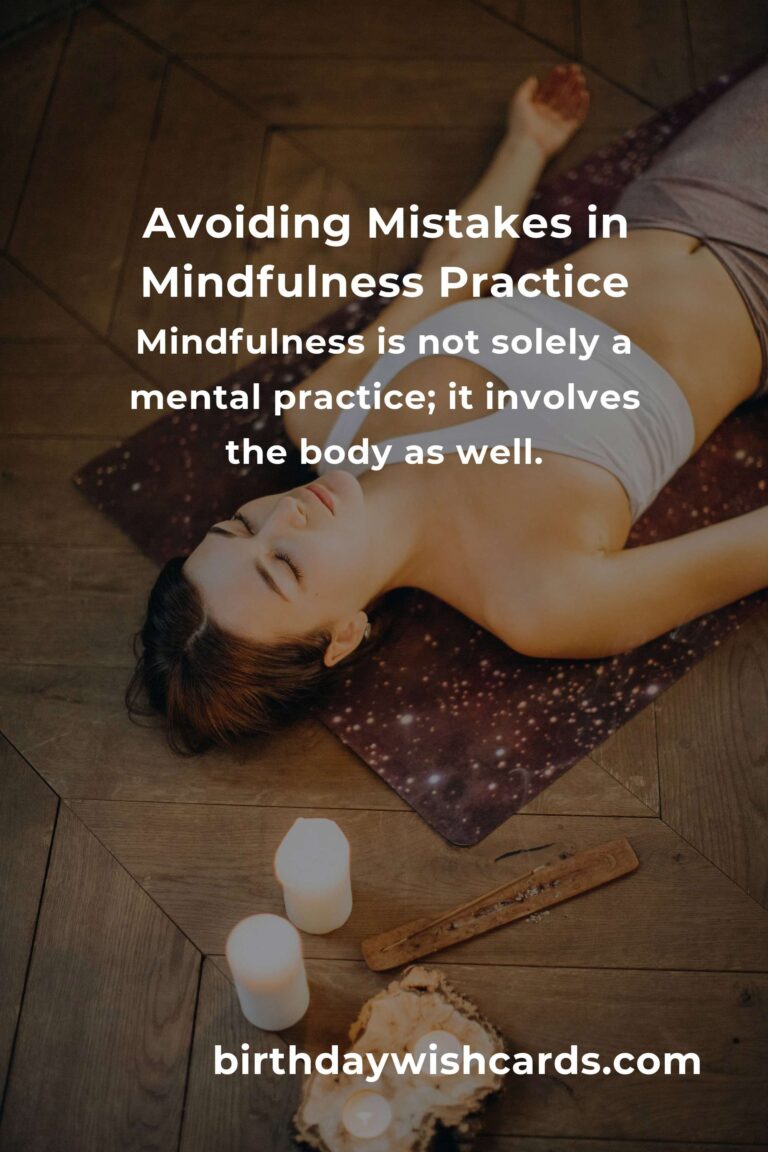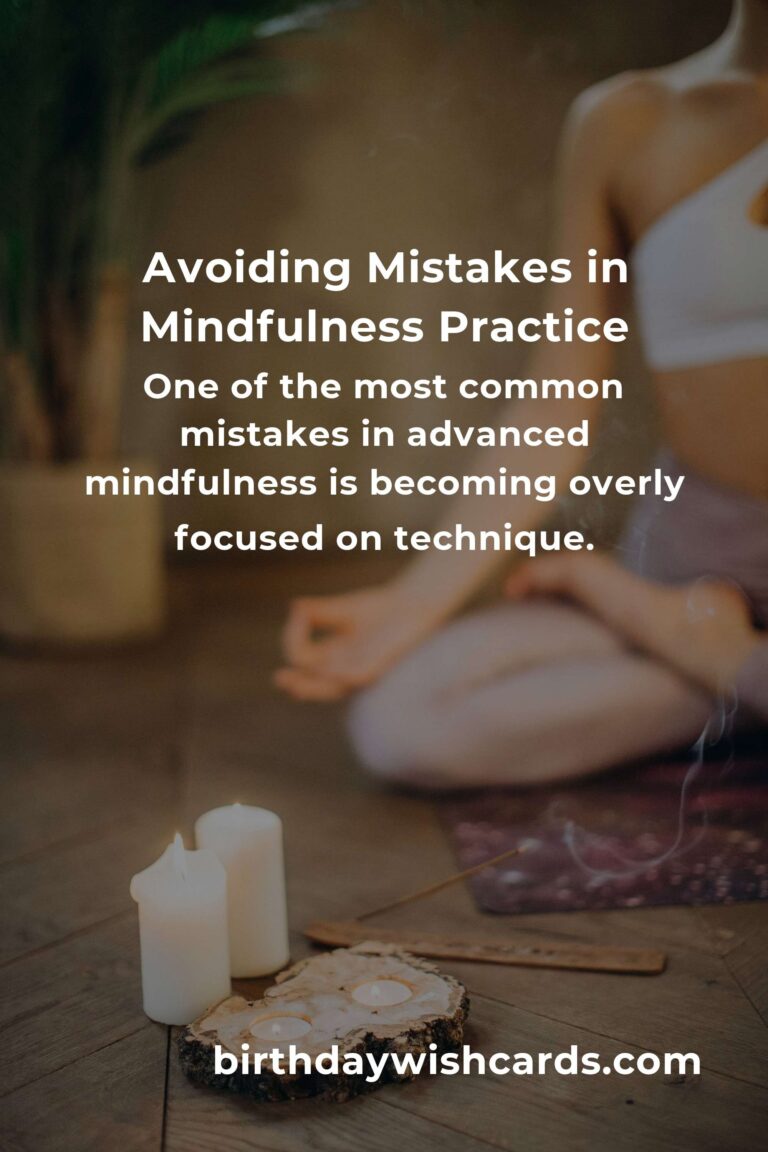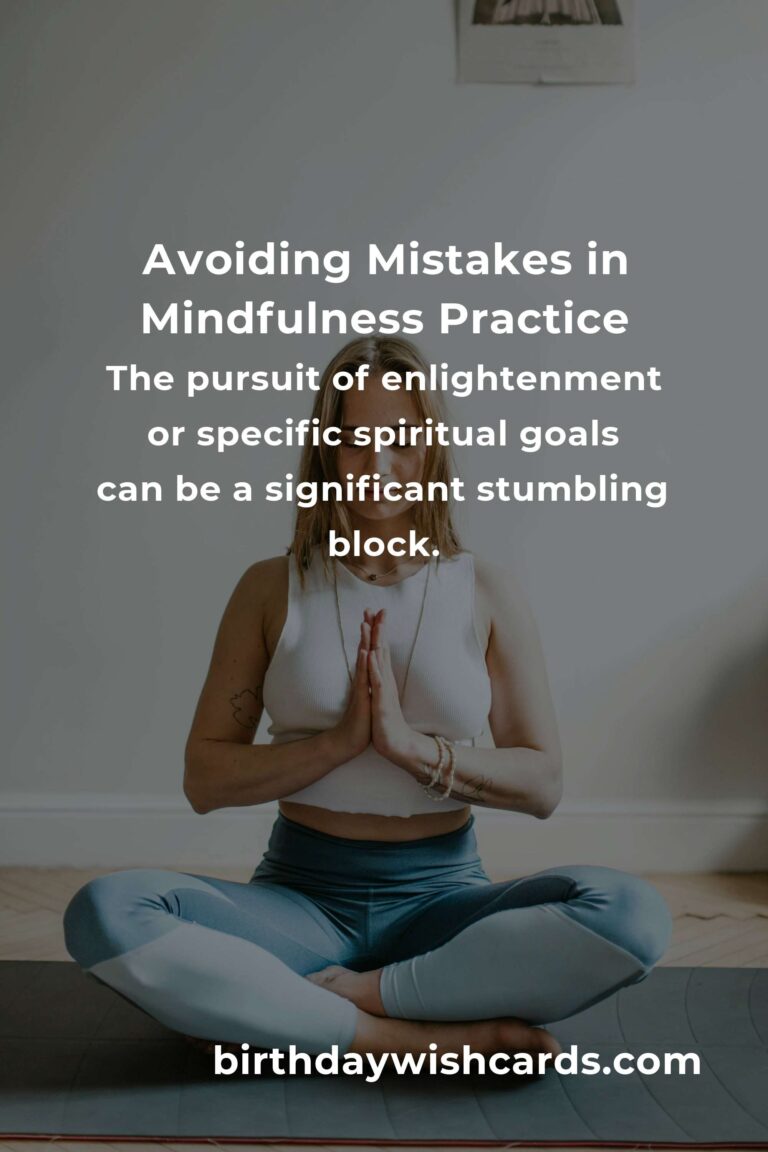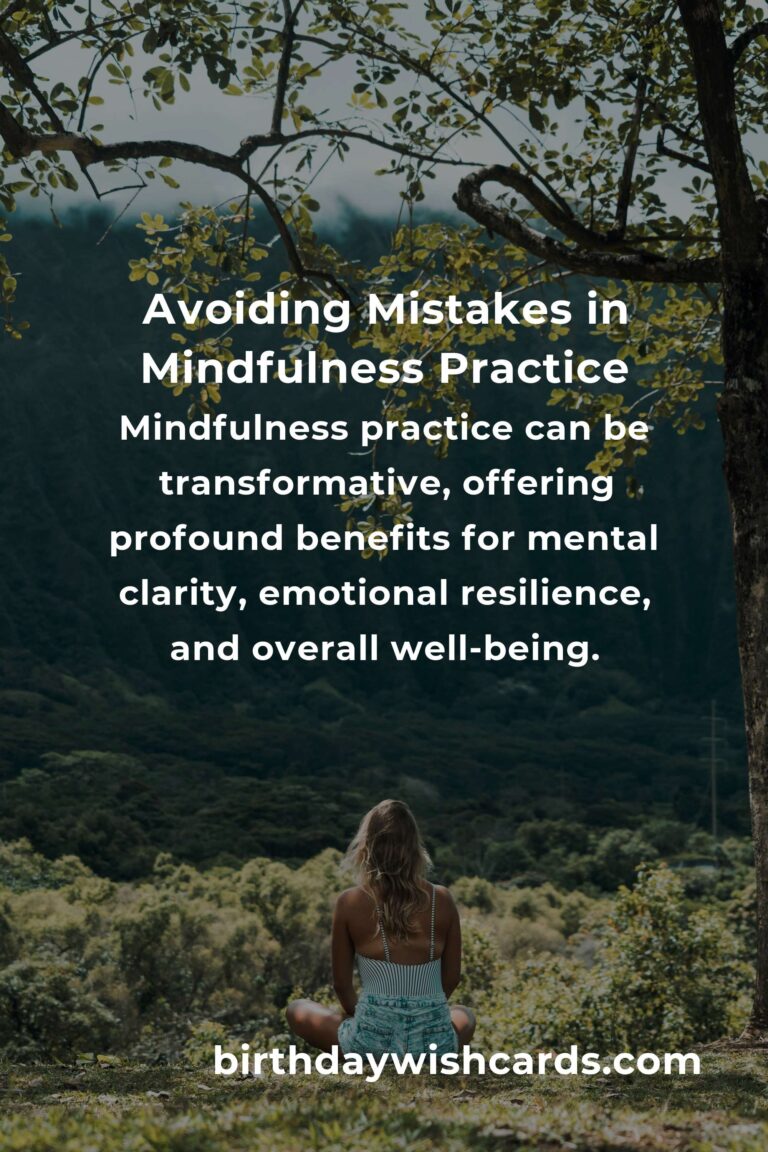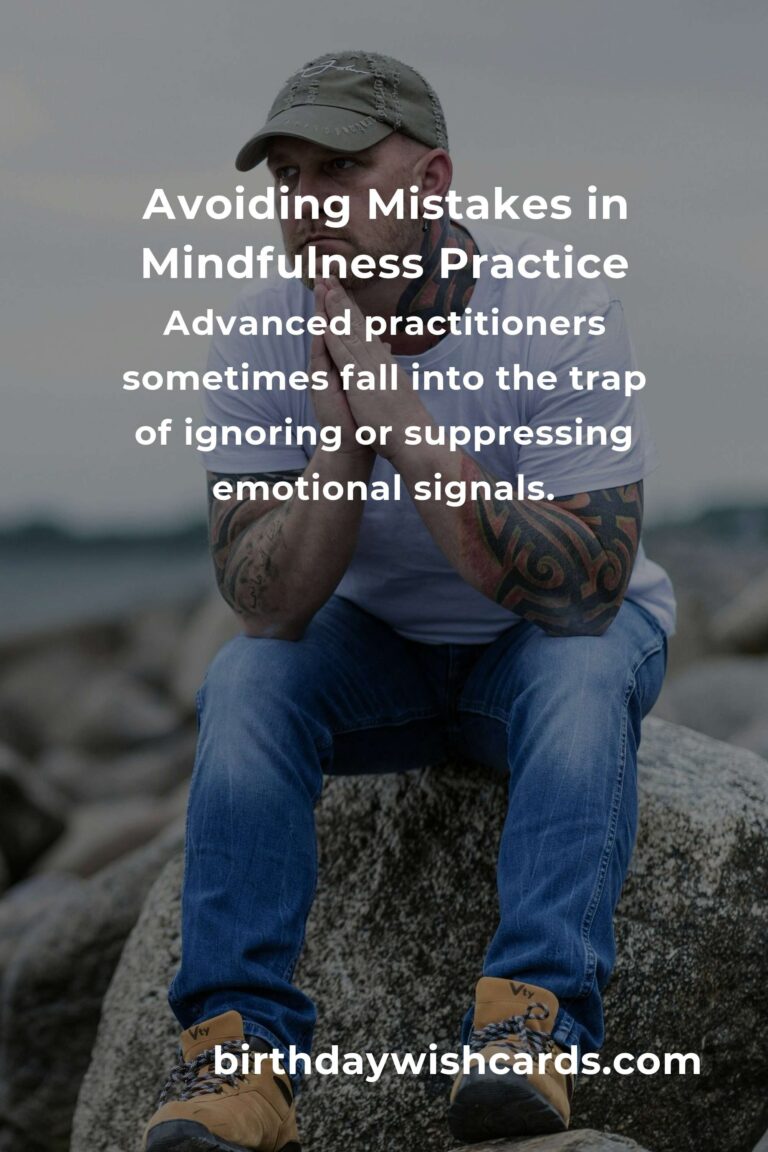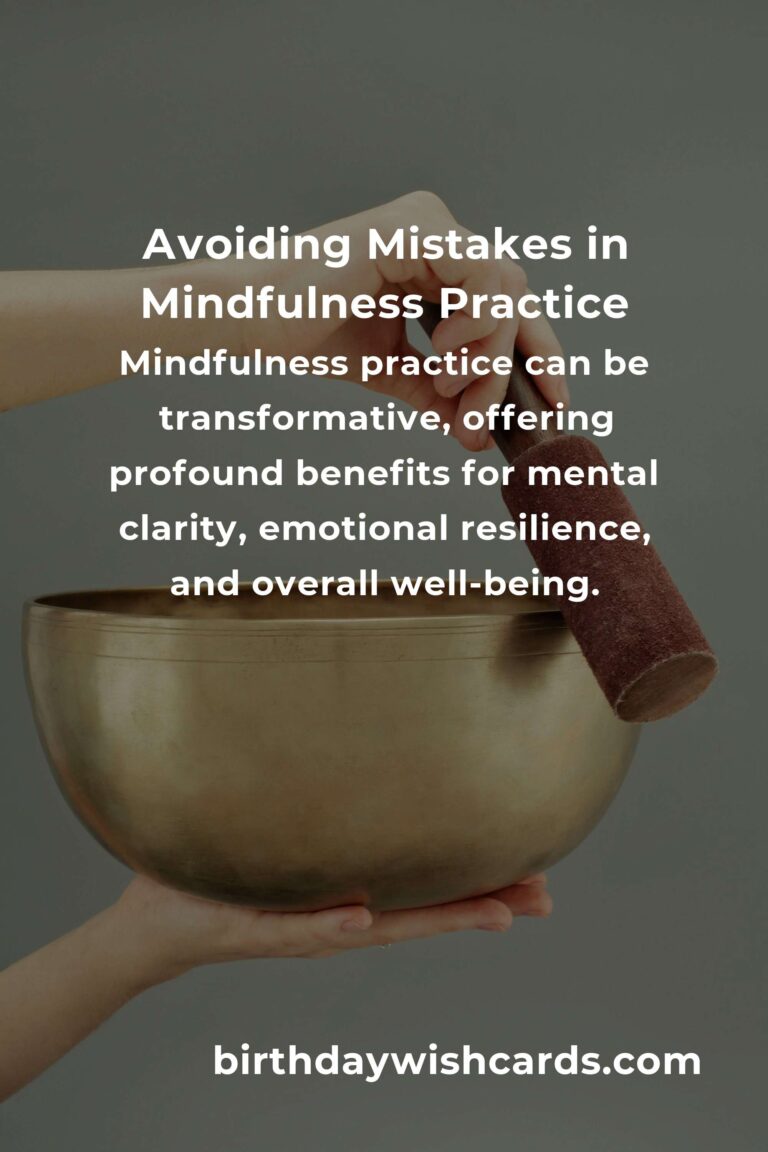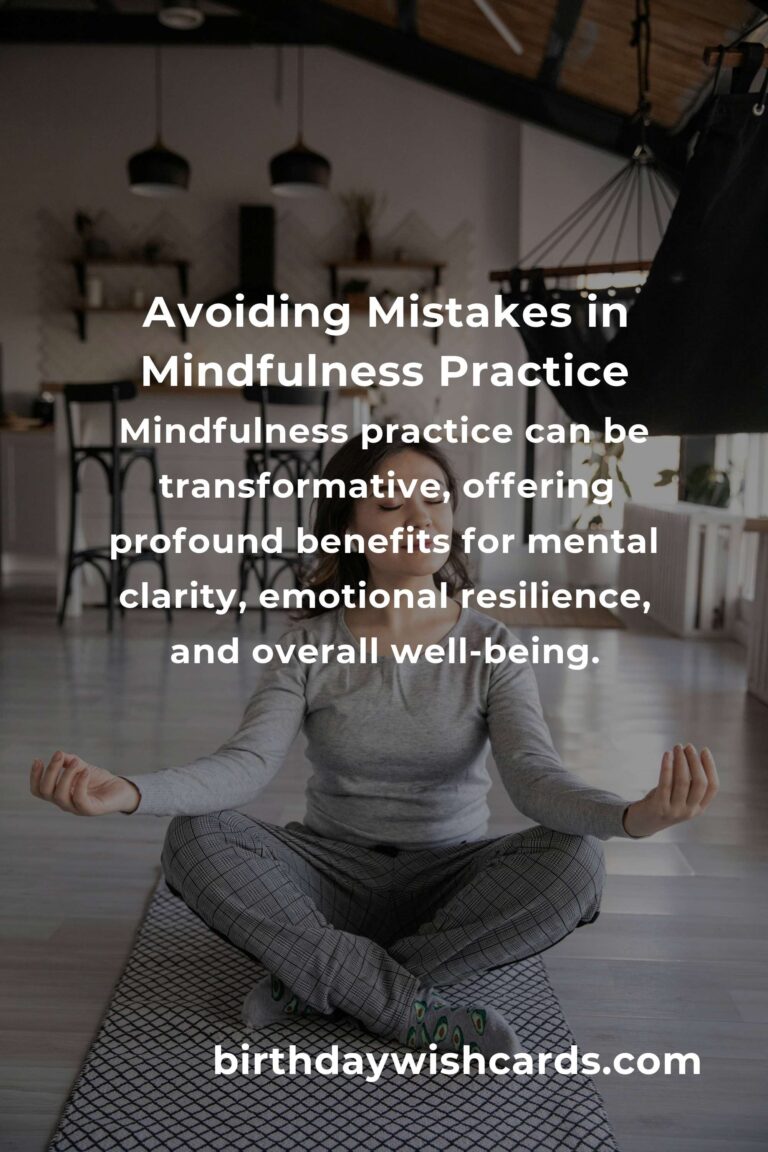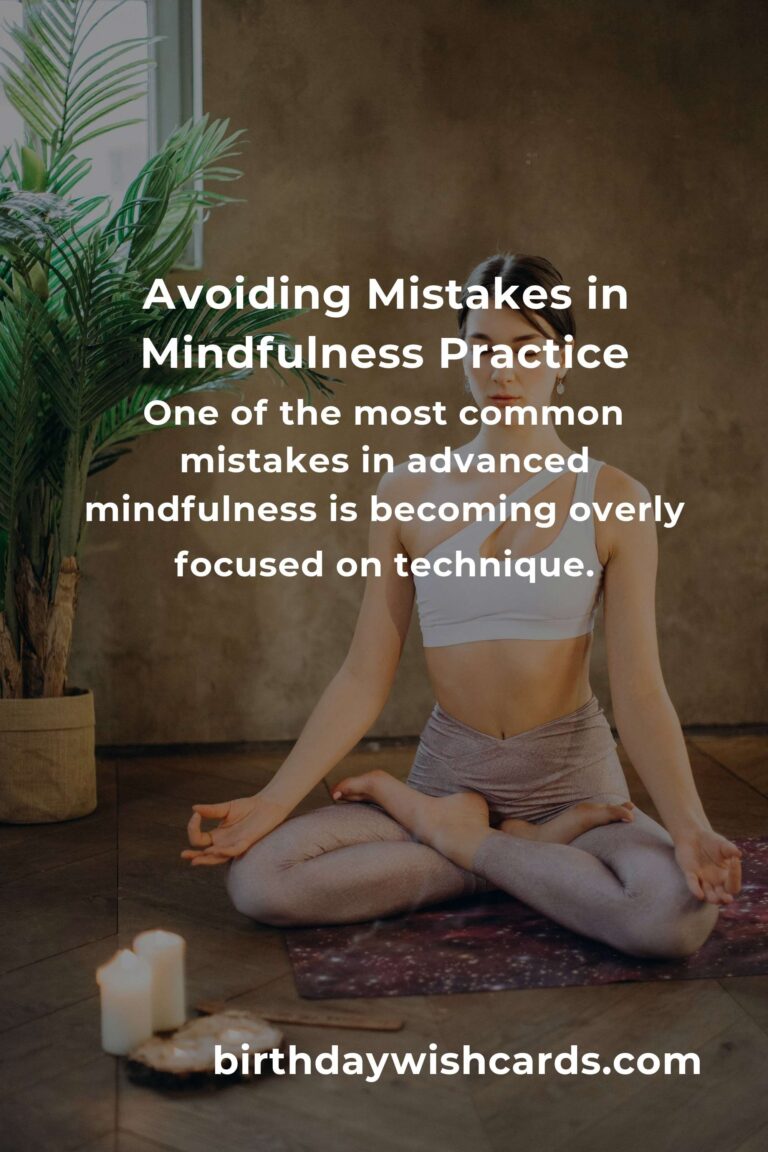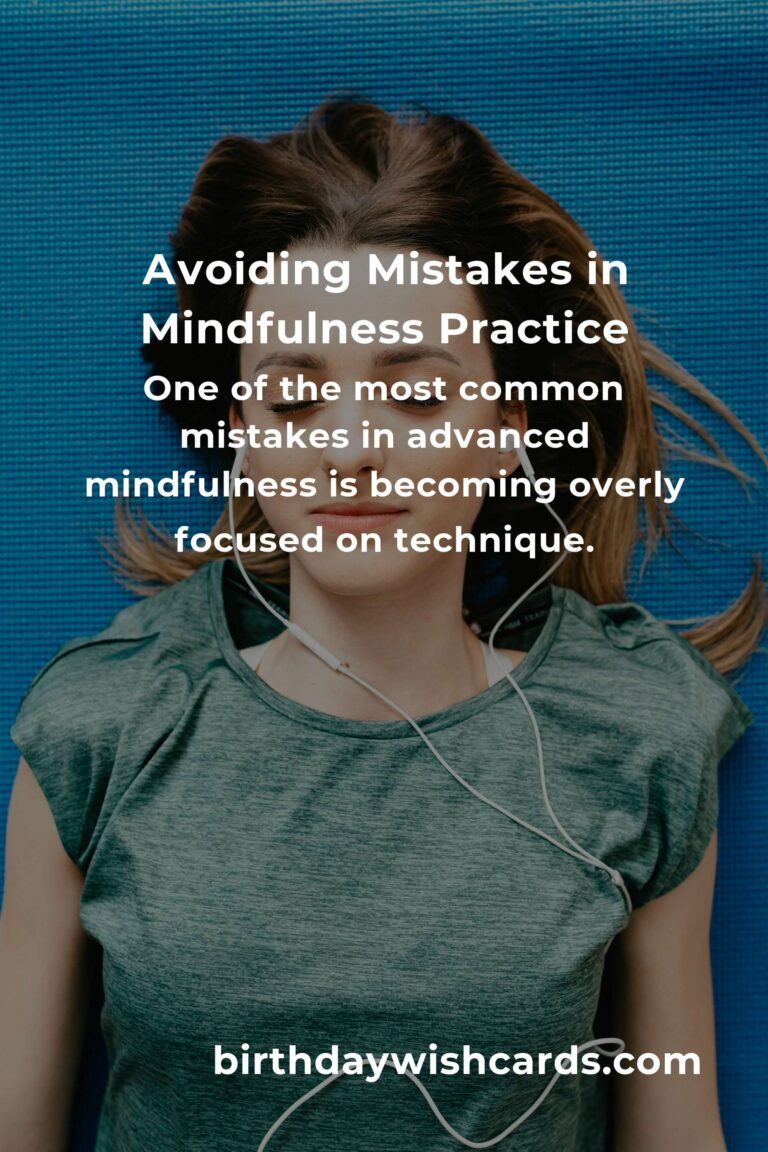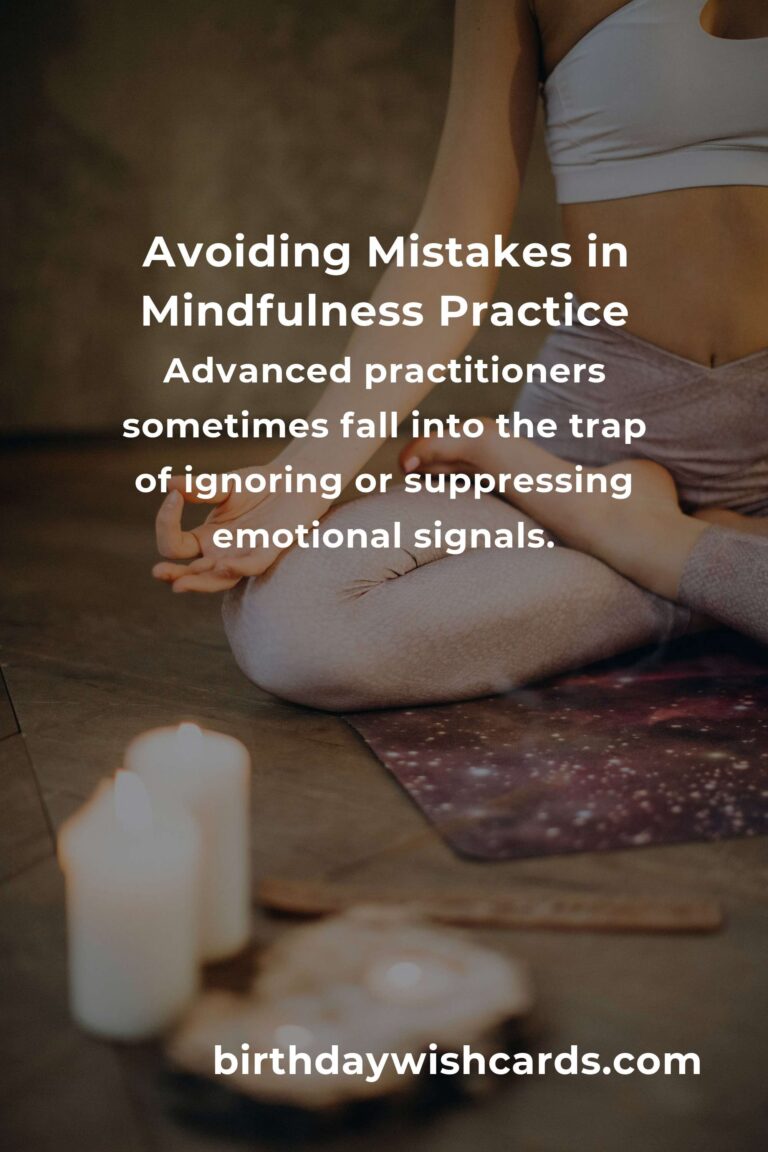
Mindfulness practice can be transformative, offering profound benefits for mental clarity, emotional resilience, and overall well-being. However, as practitioners advance in their mindfulness journey, they may encounter certain pitfalls that can hinder their progress. This article explores common mistakes in advanced mindfulness and provides insights on how to avoid them.
Overemphasis on Technique
One of the most common mistakes in advanced mindfulness is becoming overly focused on technique. Practitioners may become obsessed with perfecting their meditation posture, breath control, or concentration methods, losing sight of the essence of mindfulness. The key is to remember that mindfulness is about being present and aware in the moment, not about achieving perfection in practice.
Solution: Balance technique with presence. While it’s important to refine your skills, ensure that your primary focus remains on cultivating awareness and acceptance in each moment.
Ignoring Emotional Signals
Advanced practitioners sometimes fall into the trap of ignoring or suppressing emotional signals. They may view emotions as distractions from their practice, leading to emotional bypassing. This can prevent them from fully experiencing and processing their emotions, which is a crucial aspect of mindfulness.
Solution: Embrace emotions as part of your mindfulness practice. Acknowledge and observe your emotional states without judgment, allowing them to inform and enrich your experience.
Chasing Enlightenment
The pursuit of enlightenment or specific spiritual goals can be a significant stumbling block. When practitioners become fixated on achieving a particular state of mind, they may miss the present moment and the subtle insights it offers.
Solution: Let go of attachment to outcomes. Instead of striving for enlightenment, focus on the journey itself and the growth that comes from regular practice.
Neglecting the Body
Mindfulness is not solely a mental practice; it involves the body as well. Some advanced practitioners may neglect bodily awareness, leading to physical discomfort or imbalance.
Solution: Incorporate body awareness into your practice. Pay attention to physical sensations, posture, and movement to ensure a holistic mindfulness experience.
Isolating Practice
Advanced practitioners may isolate their mindfulness practice from the rest of their lives, viewing it as something separate rather than integrated into their daily activities.
Solution: Integrate mindfulness into everyday life. Practice mindfulness during daily tasks, such as eating, walking, or conversing, to deepen your practice and its impact on your life.
Conclusion
Advanced mindfulness offers a path to deeper self-awareness and transformation, but it requires careful navigation to avoid common mistakes. By maintaining a balanced approach that embraces both technique and presence, people can cultivate a richer, more authentic mindfulness practice. Remember, mindfulness is a journey, not a destination, and every moment offers an opportunity for growth and discovery.
Mindfulness practice can be transformative, offering profound benefits for mental clarity, emotional resilience, and overall well-being. One of the most common mistakes in advanced mindfulness is becoming overly focused on technique. Advanced practitioners sometimes fall into the trap of ignoring or suppressing emotional signals. The pursuit of enlightenment or specific spiritual goals can be a significant stumbling block. Mindfulness is not solely a mental practice; it involves the body as well. By maintaining a balanced approach that embraces both technique and presence, people can cultivate a richer, more authentic mindfulness practice.
#Mindfulness #Meditation #EmotionalWellbeing #SpiritualJourney #SelfAwareness


